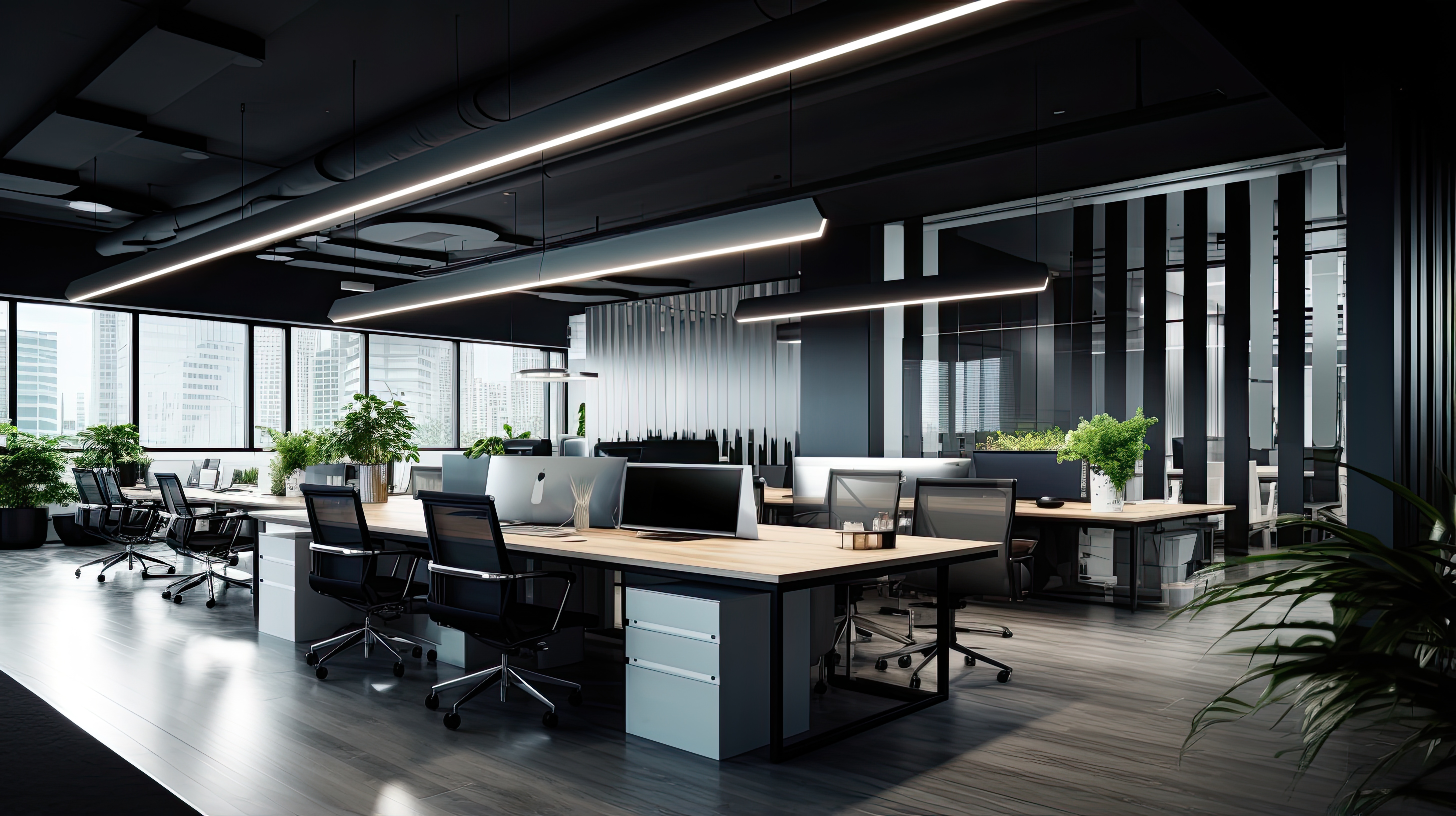
If you're new to commercial office furniture and need to furnish your first private office, business floor, or office building but are not sure what you need beyond a desk and chairs, this blog has you covered.
In this article, we will go over a list of every large category of office furniture pieces, explain what they are used for, and list the sub-categories that are available.
We want to make sure that you confidently source the exact pieces needed for your office, but how can you make an informed decision if you don't know what's out there?
What pieces do some of the largest businesses in the world use to create productive, organized, and comfortable spaces for their employees?
Hopefully, this guide will equip you with the most basic knowledge about office furniture and act as a stepping stone to the more intricate details about office furniture buying, such as style, ergonomics, and features.
Â
The List
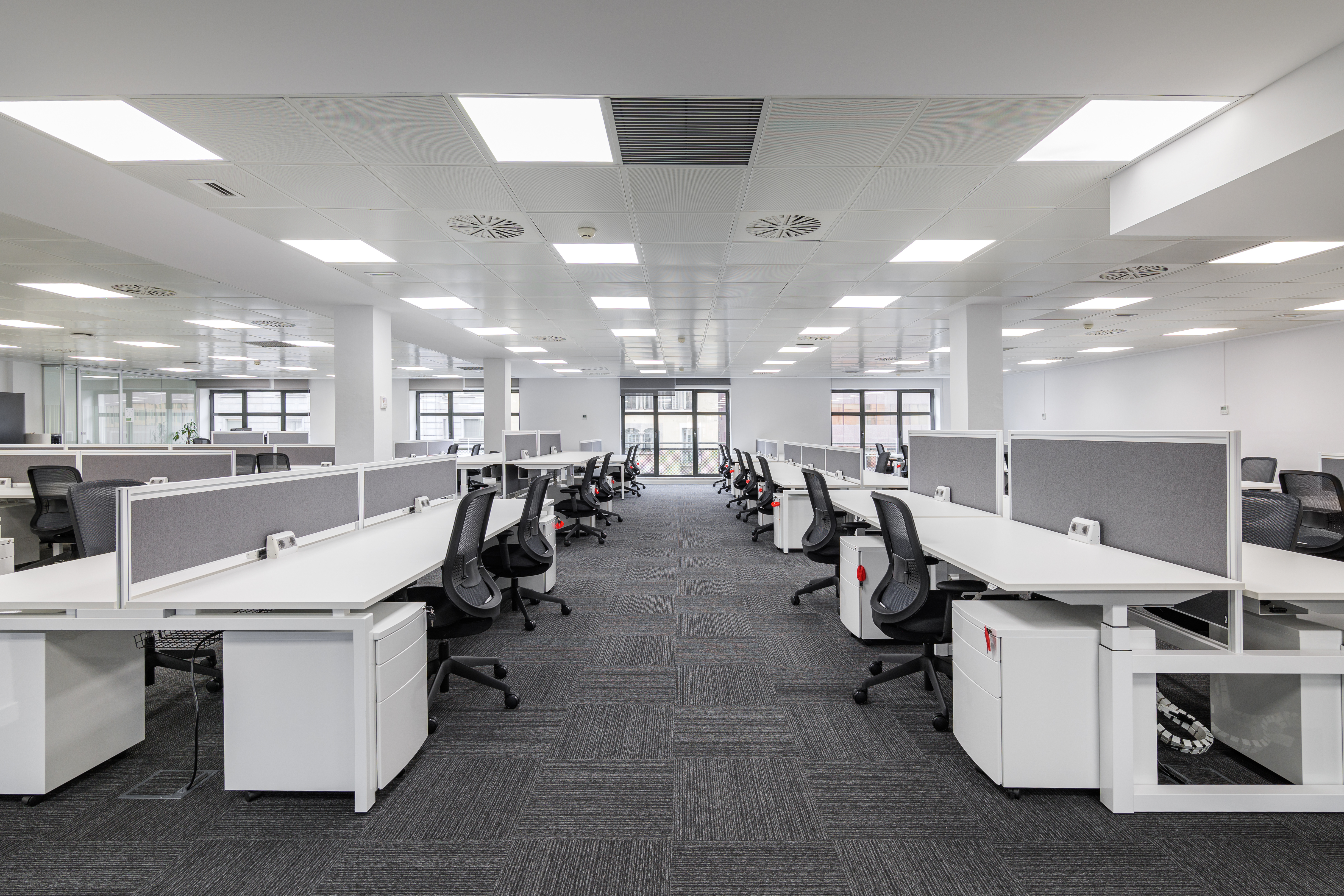
Office Desks
Office desks are the quintessential piece of office furniture and usually serve as the focal point. An office desk is a work surface with a flat top supported by legs or a frame. Generally used for writing, reading, or computer work, they can serve a surprising amount of functions depending on the desk type.
Office desks are useful:
-
Providing a dedicated workspace.
-
Offering a comfortable surface for completing your tasks.
-
Storing office supplies and other materials you need to keep close.
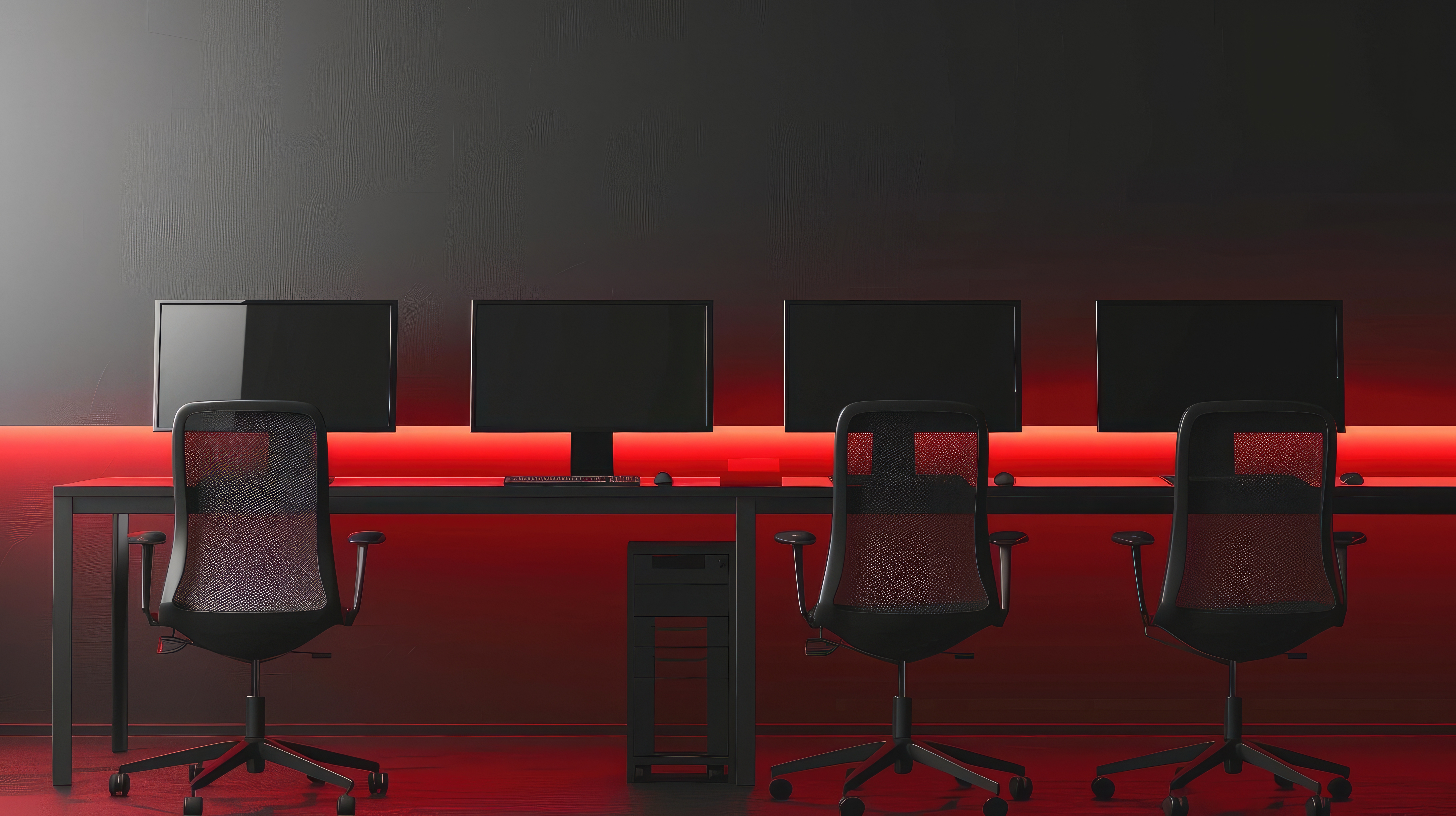
Types of Office Desks:
-
Executive Desks
-
Home Office Desks
-
L-shaped Shaped Desks
-
Pedestal Desks
-
Reception Desks
-
Sit-stand Stand Desks
-
Traditional Desks
-
U-shaped Shaped Desks
-
Wall-mounted Mounted Desks

Office Chairs
Office chairs are designed for use in an office environment, meaning they prioritize comfort and ergonomics. Unlike regular chairs, an office chair is built to provide support and reduce problems associated with long periods of seated desk work. Nowadays, the styles and colors of desk chairs are so varied that it's easy to have fun with their overall aesthetic.
Here's why the right office chair is important:
-
They improve posture and reduce pain.
-
Increase productivity and focus through comfortability.
-
Enhanced circulation and reduced fatigue using breathable materials.
-
Durability and investment in high-quality office chairs.
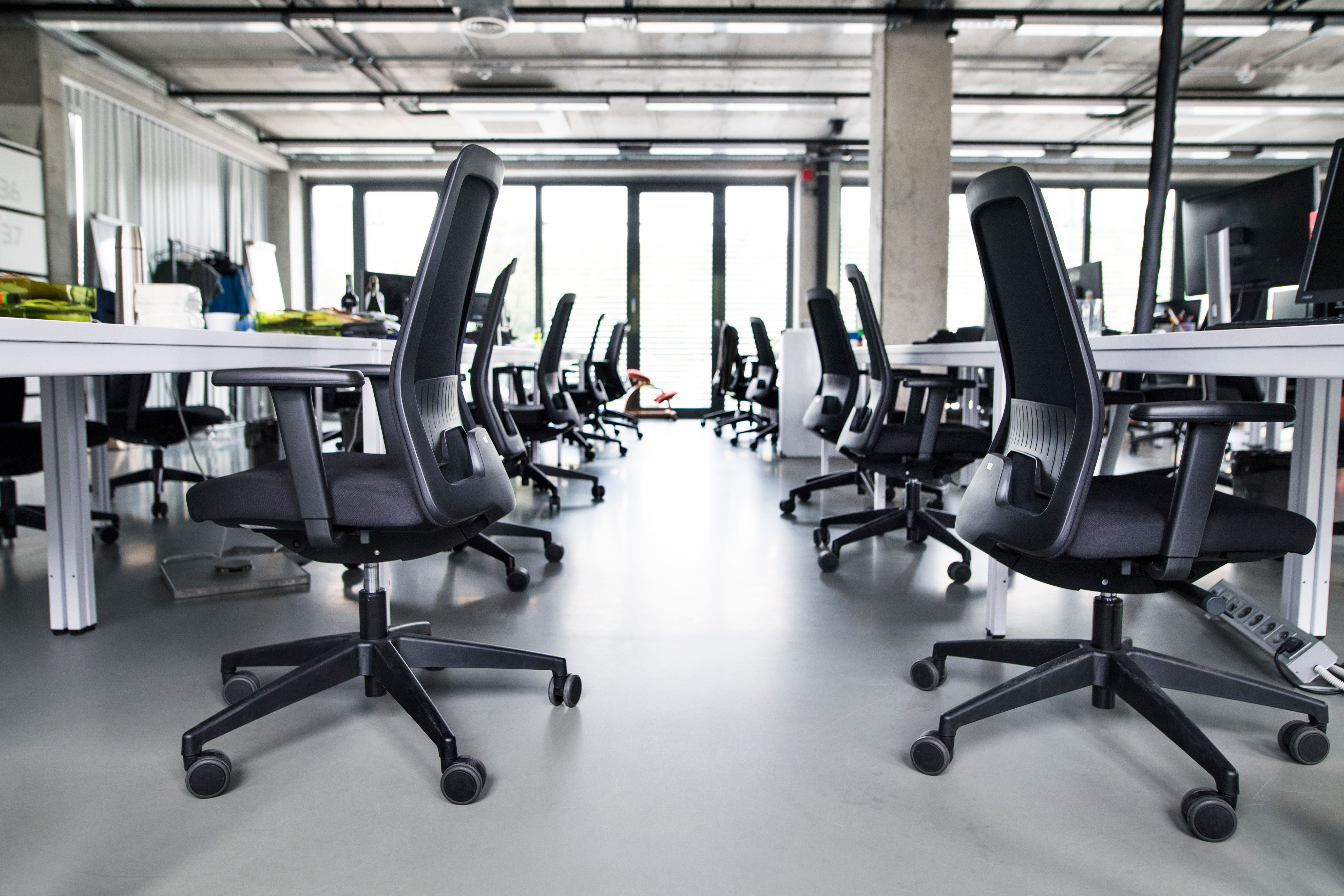
Types of Office Chairs:
-
Armless Office Chair
-
Big and Tall Chairs
-
Black Office Chair
-
Conference Chairs
-
Ergonomic Chair
-
Executive Chairs
-
Heavy-Duty Chairs
-
Leather Office Chairs
-
Mesh Office Chairs
-
Office Stools
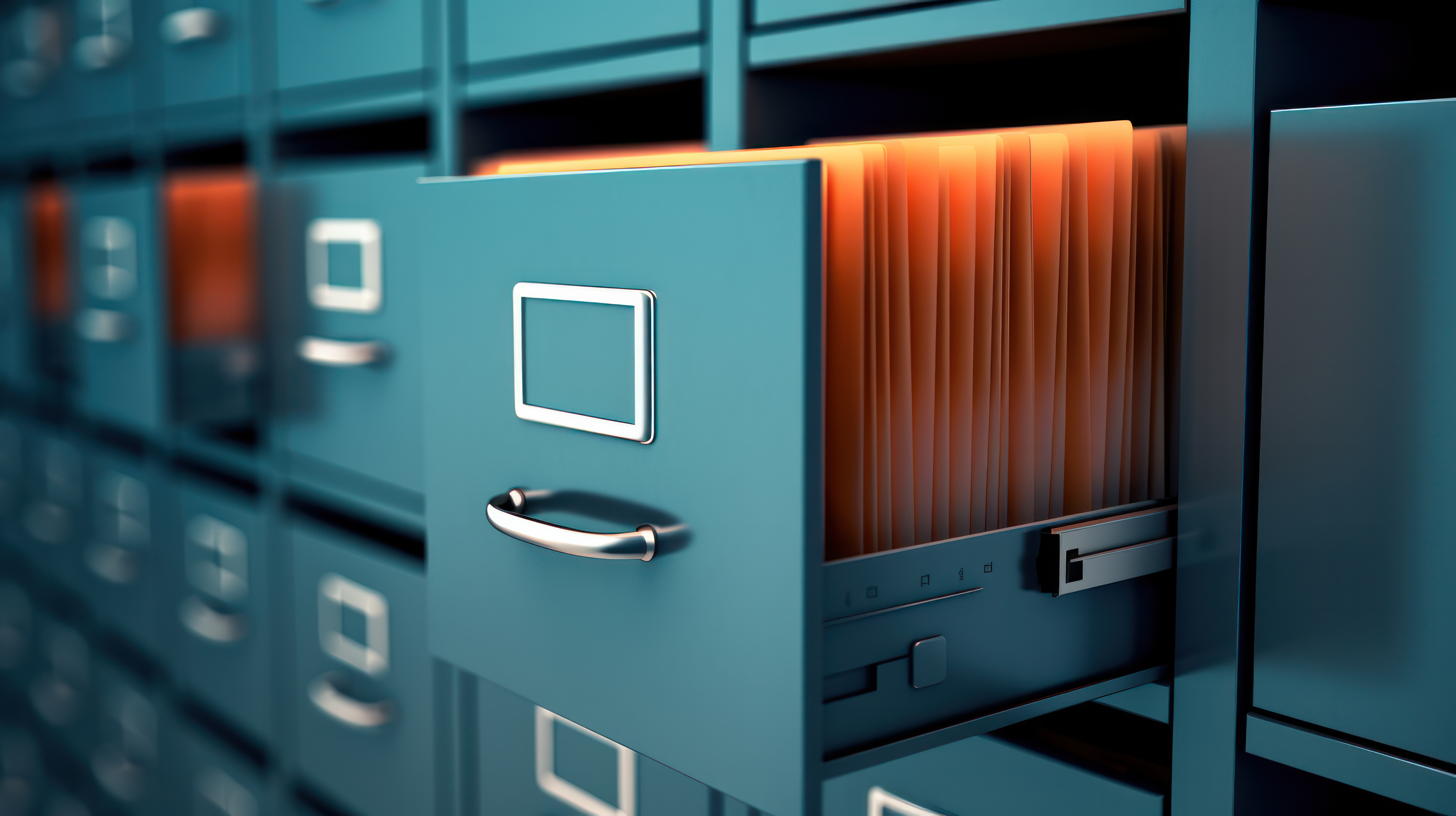
File Cabinets
File cabinets are office furniture pieces used as storage and organization for paper documents. They're common in offices, businesses, and other professional settings.
Despite the world going digital, a file cabinet is still useful because:
-
They allow you to systematically arrange your documents.
-
Filing cabinets can be locked, providing a secure location for financial information or employee records.
-
File cabinets hold a large amount of paperwork, which helps offices with limited floor space.
-
Special fire-resistant file cabinets offer extra protection for irreplaceable documents.
-
Documents in a file cabinet can be easily accessed by relevant parties.
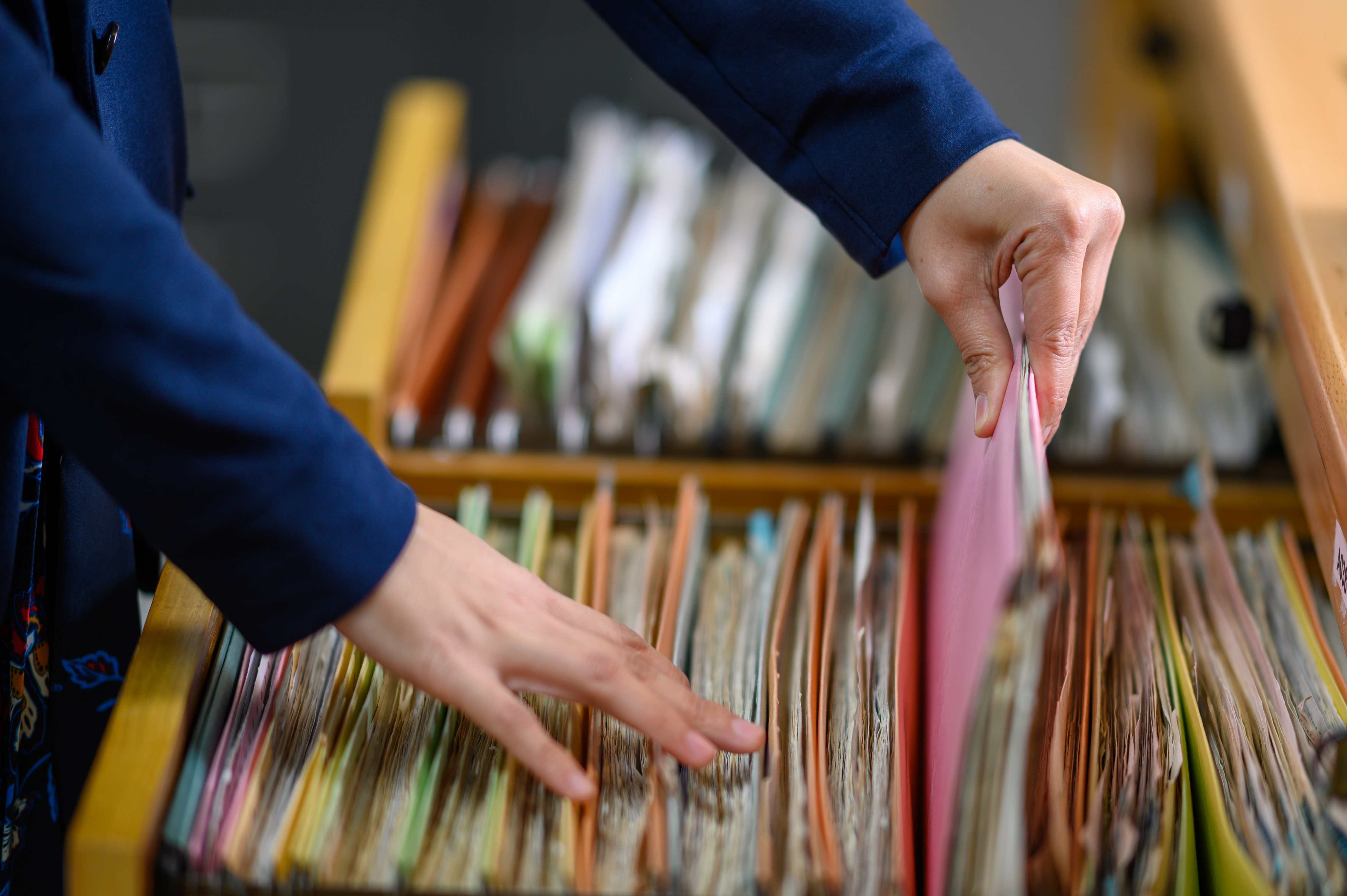
Types of File Cabinets:
-
2 Drawer
-
3 Drawer
-
4 Drawer
-
5 Drawer
-
Credenza File Cabinet
Â
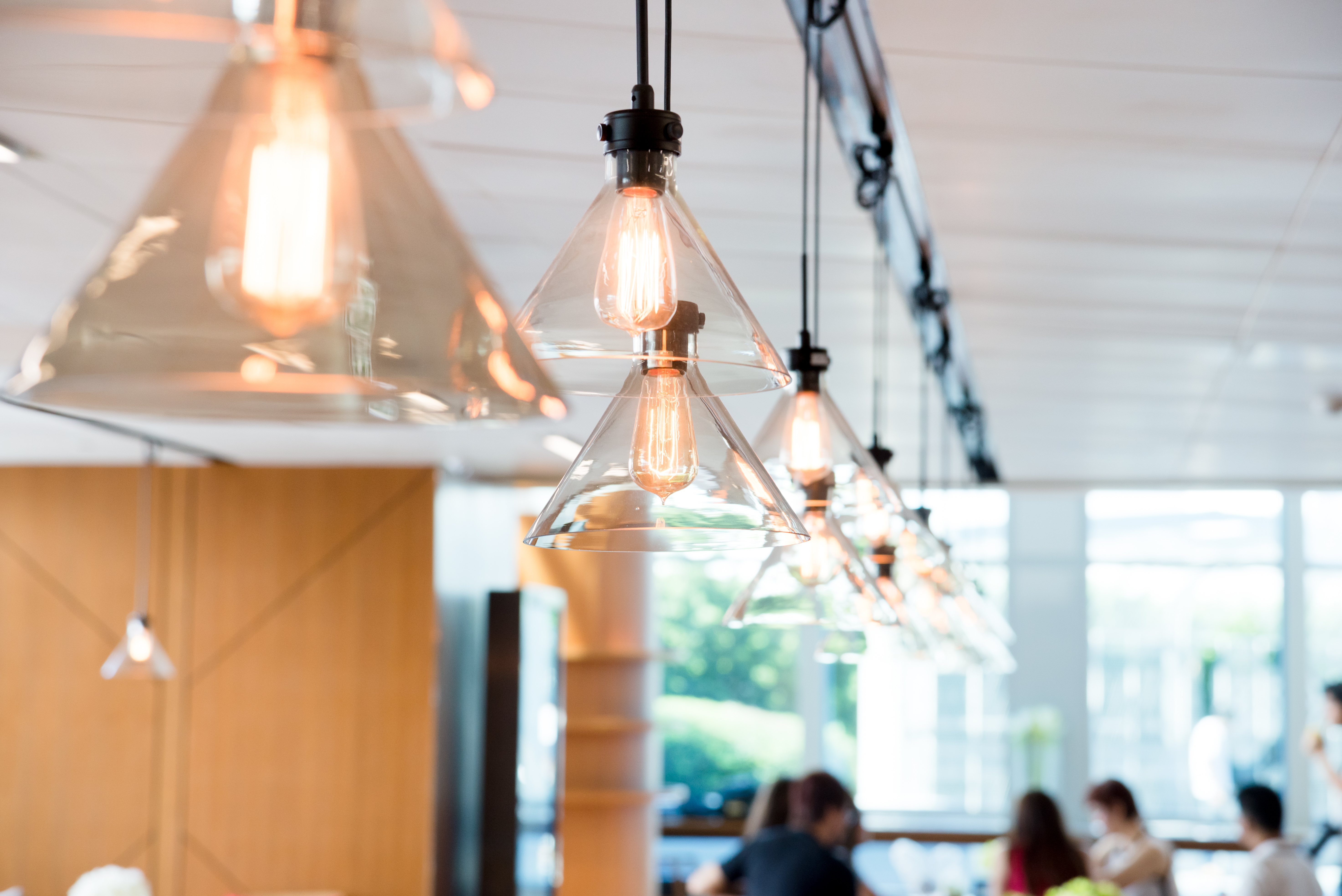
Lighting
Office lighting can make or break the space because if you can't see to work or have to pay for special services to change long fluorescent bulbs, it becomes a waste of time and money. Lighting nowadays not only serves as workspace, be it the ceiling, floor, or desk illumination, but even as an important decorative element that adds style to the space.
Lighting design and setup in a workspace aim to:
-
Reduces eye strain, headaches, and accidents.
-
Boost alertness and concentration.
-
Create an ambiance that feels more inviting and promotes employee well-being.
-
Regulate employees' circadian rhythms, which can improve sleep quality and overall health.
-
Reduce energy consumption and costs.
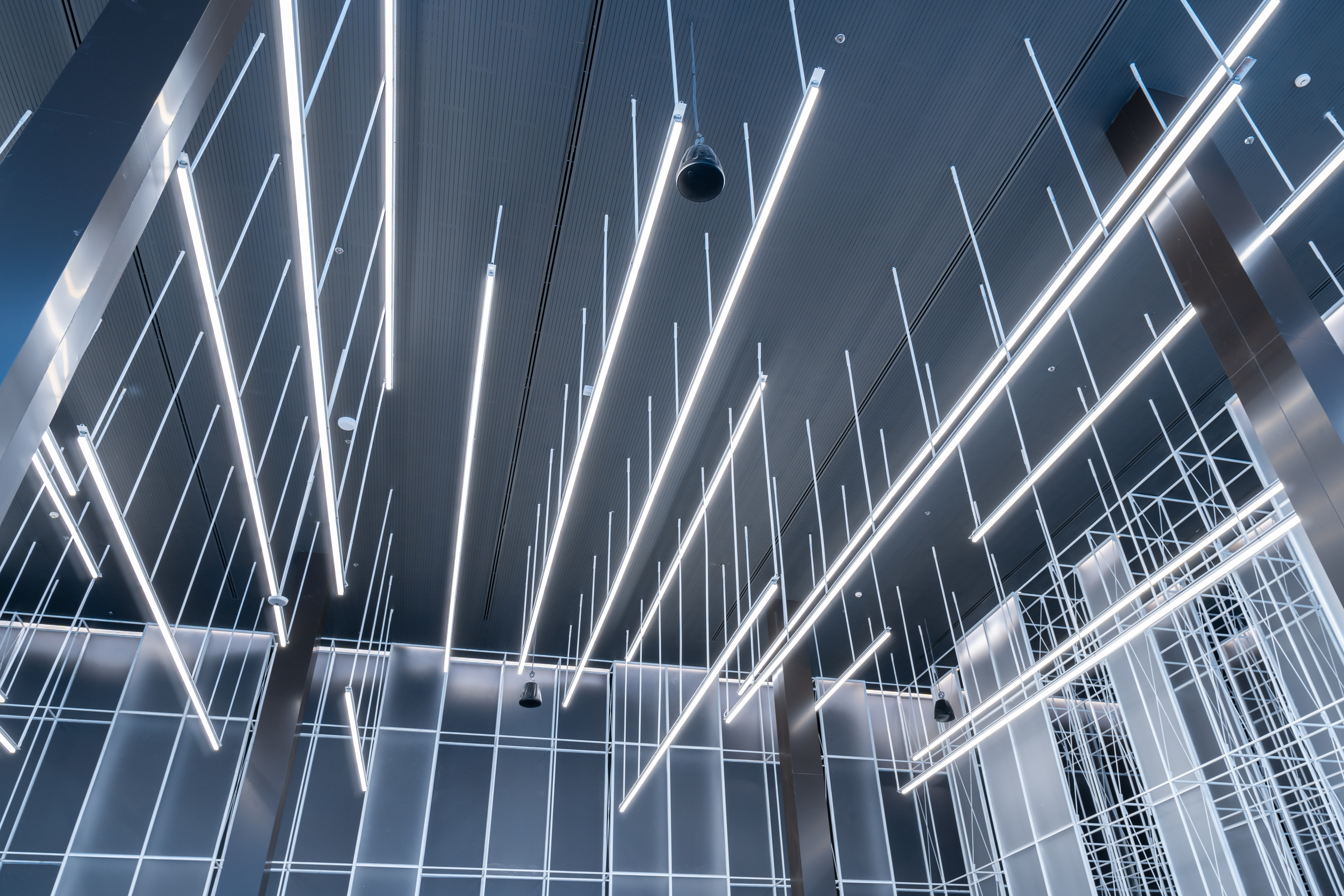
Types of Office Lighting:
-
Desk Lamps
-
Accent Lighting
-
Floor Lamps
-
Fluorescent Lighting
-
LED Lighting
Â
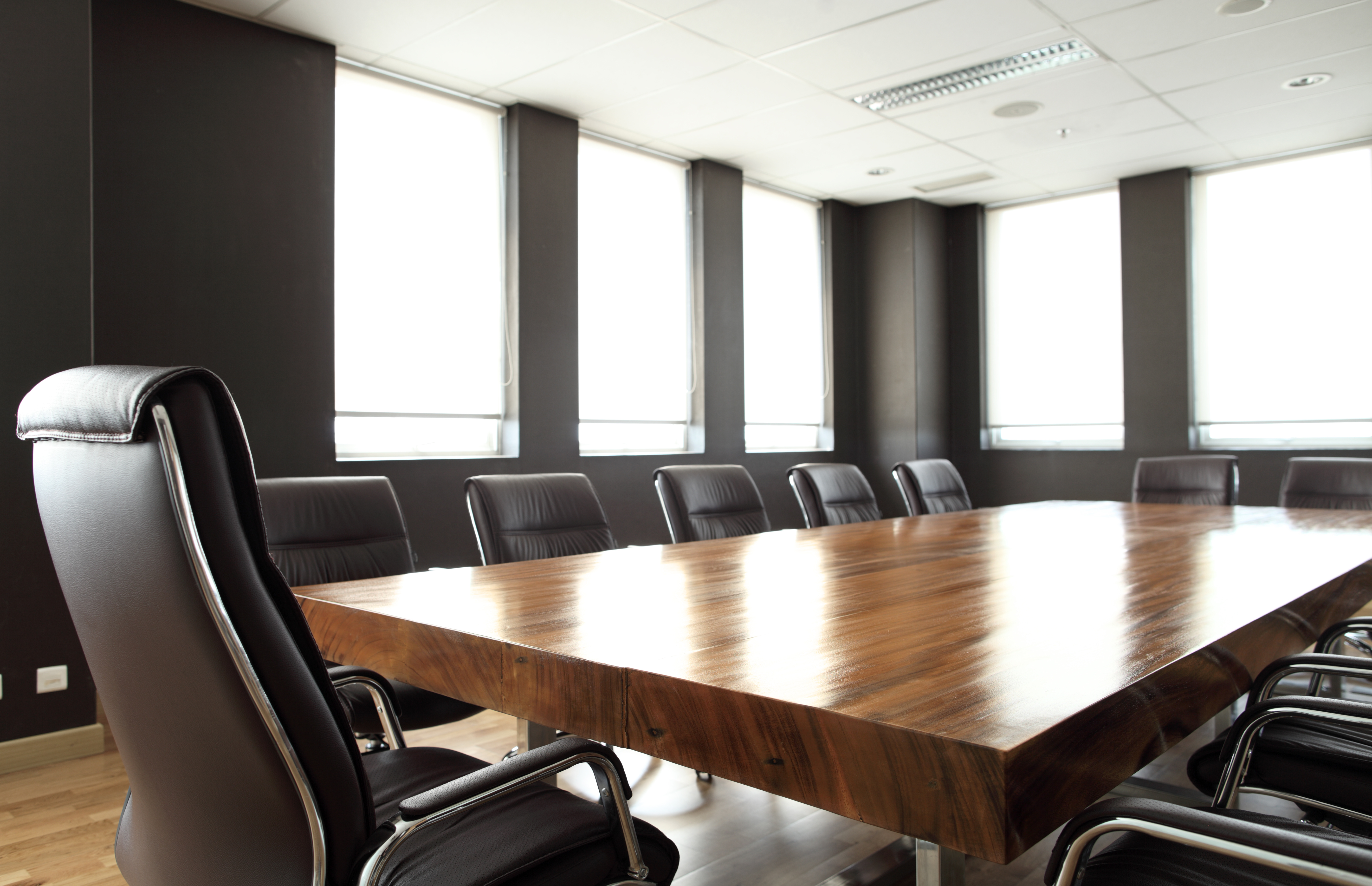
Tables
Office tables come in a wide variety of options, all dependent upon their use, but what they have most in common is that they include a flat surface with legs. They can be used for events, training rooms, breakrooms, waiting areas, and much more.
Tables for your office space are particularly useful as:
-
Shared workspace for teams and collaborations.
-
Easy to set up and take down office event space.
-
A place to set refreshments and reading materials for guests.
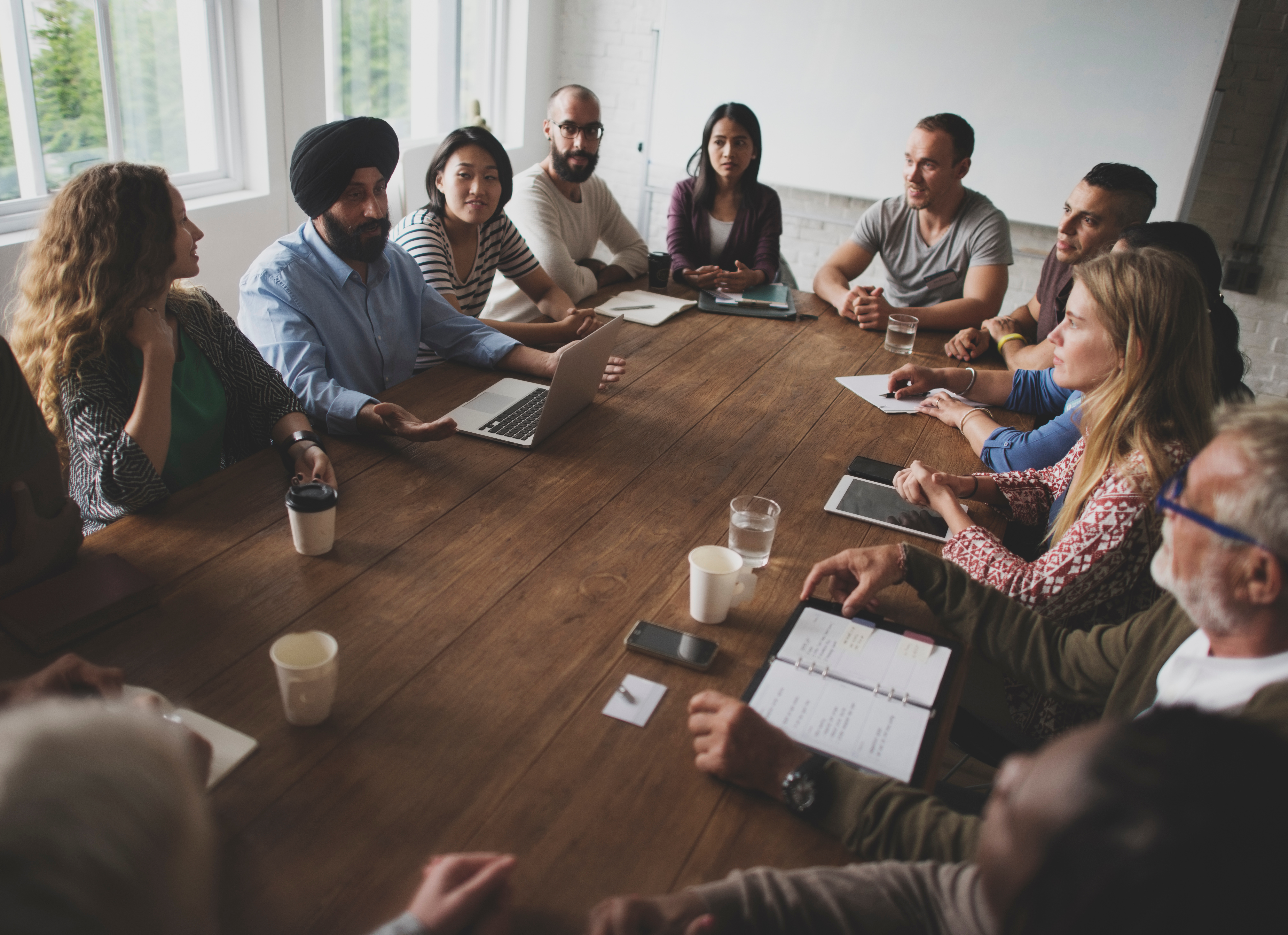
Types of Office Tables:
-
Cafe Tables
-
Coffee Tables
-
Conference Tables
-
Folding Tables
-
Picnic Tables
-
Training Tables

Bookshelves
Office bookshelves are another place where important documents and literature pertaining to your business are stored. They also offer a timeless, even classic, feel to office spaces because of their traditional qualities.
Here's why office bookshelves are so useful:
-
Storage of books, reference materials, binders, folders, office supplies, and even printers or small equipment.
-
Easy access to your work materials translates to increased efficiency.
-
Office bookshelves add professionalism and sophistication to your workspace.
-
Office bookshelves come in various sizes, styles, and materials, making them easy to customize.
-
Bookshelves can maximize your use of vertical space, saving on limited square footage.
-
Beyond storage, bookshelves can serve other purposes. You can use them to display awards, plants, or decorative items to personalize your workspace and create a more inviting atmosphere.
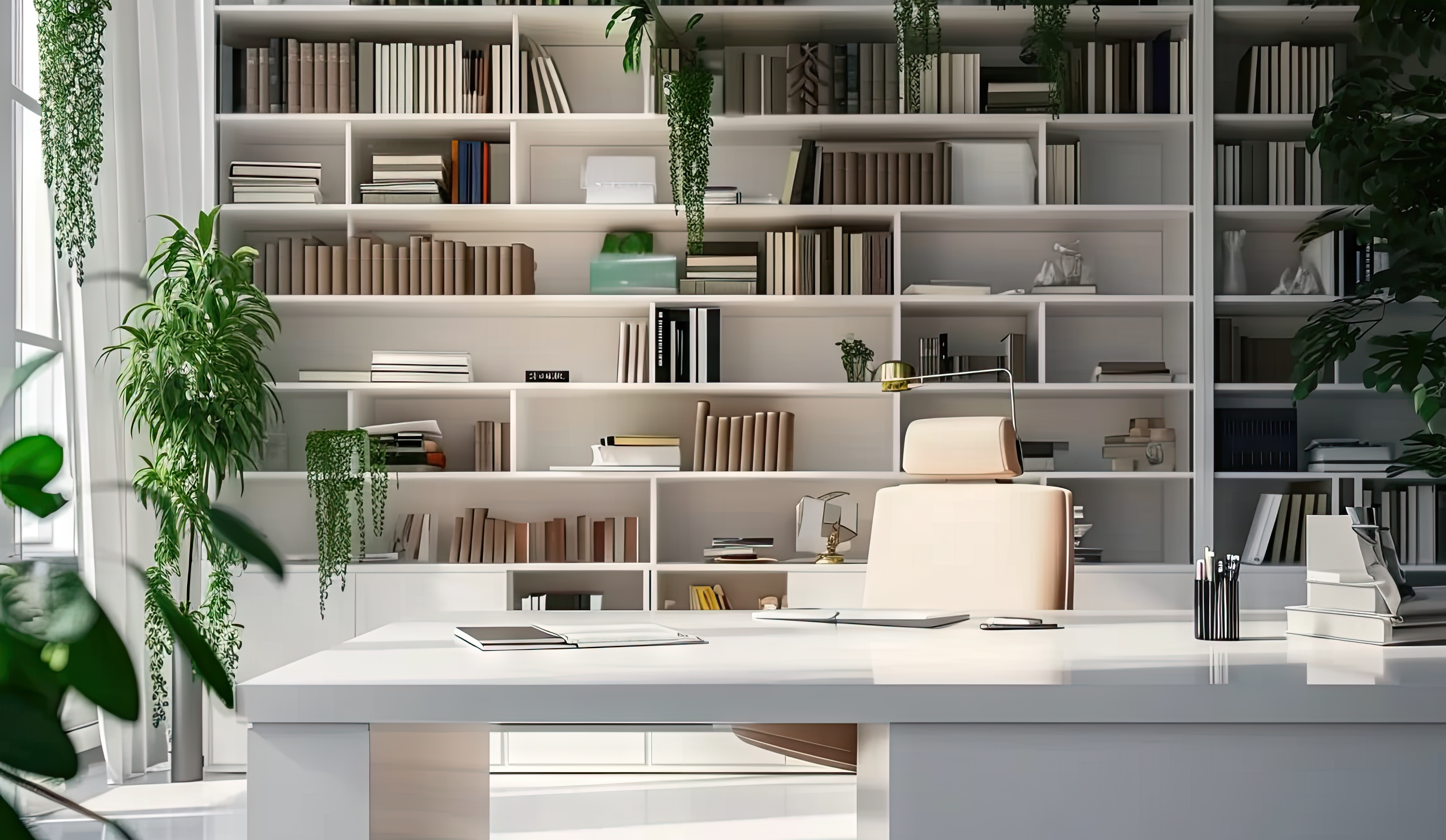
Types of Office Bookcases:
-
Corner Bookcase
-
Bookcase with Locking Doors
-
2 Shelf Bookcase
-
3 Shelf Bookcase
-
5-shelf Bookcase
-
Credenza Bookcase
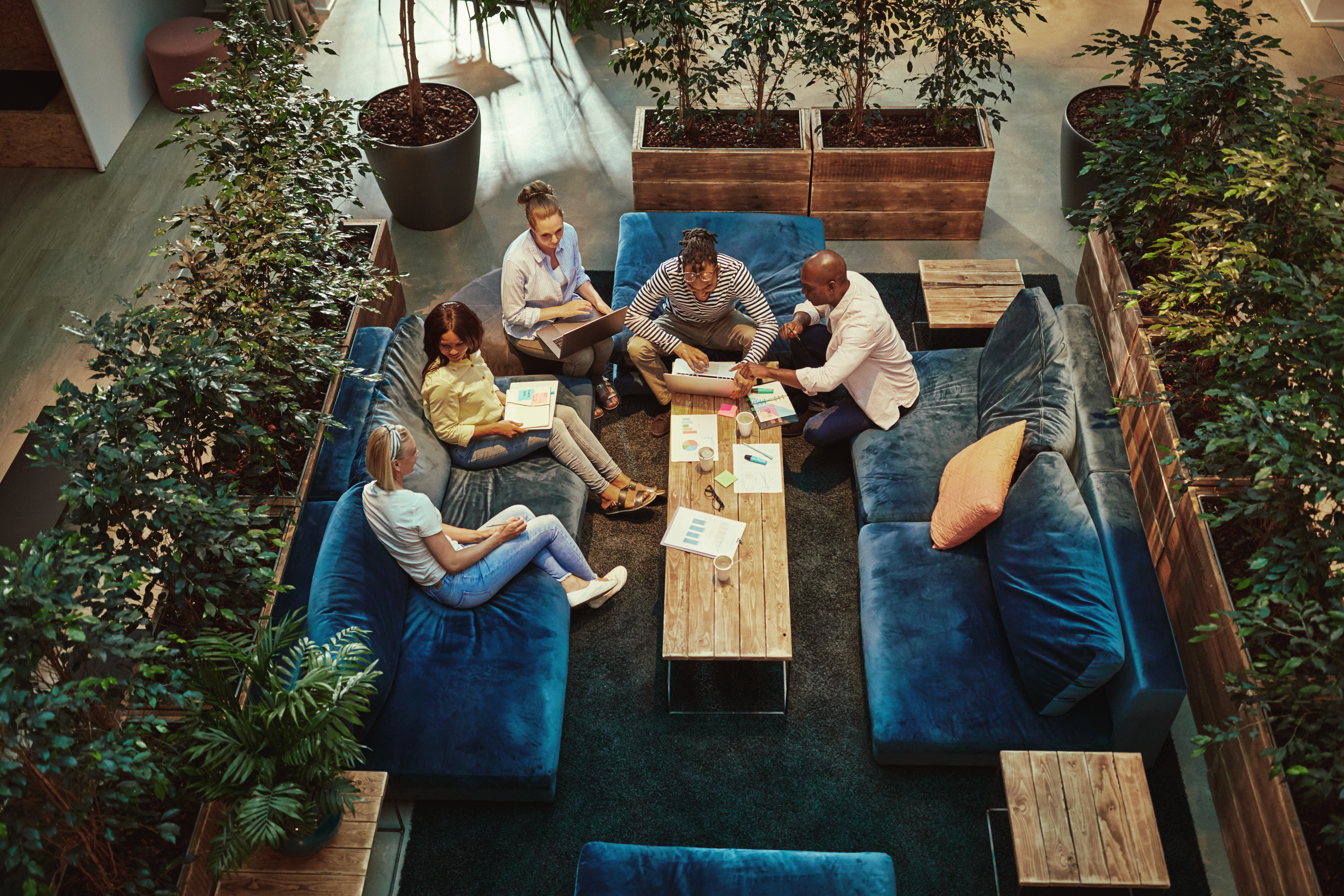
Breakroom Furniture
Breakroom furniture is used to furnish an office lounge where employees can relax and have lunch. Yet it involves more than just sitting and eating. Comfort, calm, and functionality for extra activities all play into the design of breakroom furniture for an office.
The right breakroom furniture provides:
-
Comfortable seating and tables that allow employees to de-stress and recharge during breaks.
-
Group seating, like booths or high-top tables, encourages interaction and collaboration.
-
Employee well-being and creates a more positive work environment, contributing to higher morale and job satisfaction.
-
A clear division between work zones and relaxation areas helps employees switch off effectively during breaks.
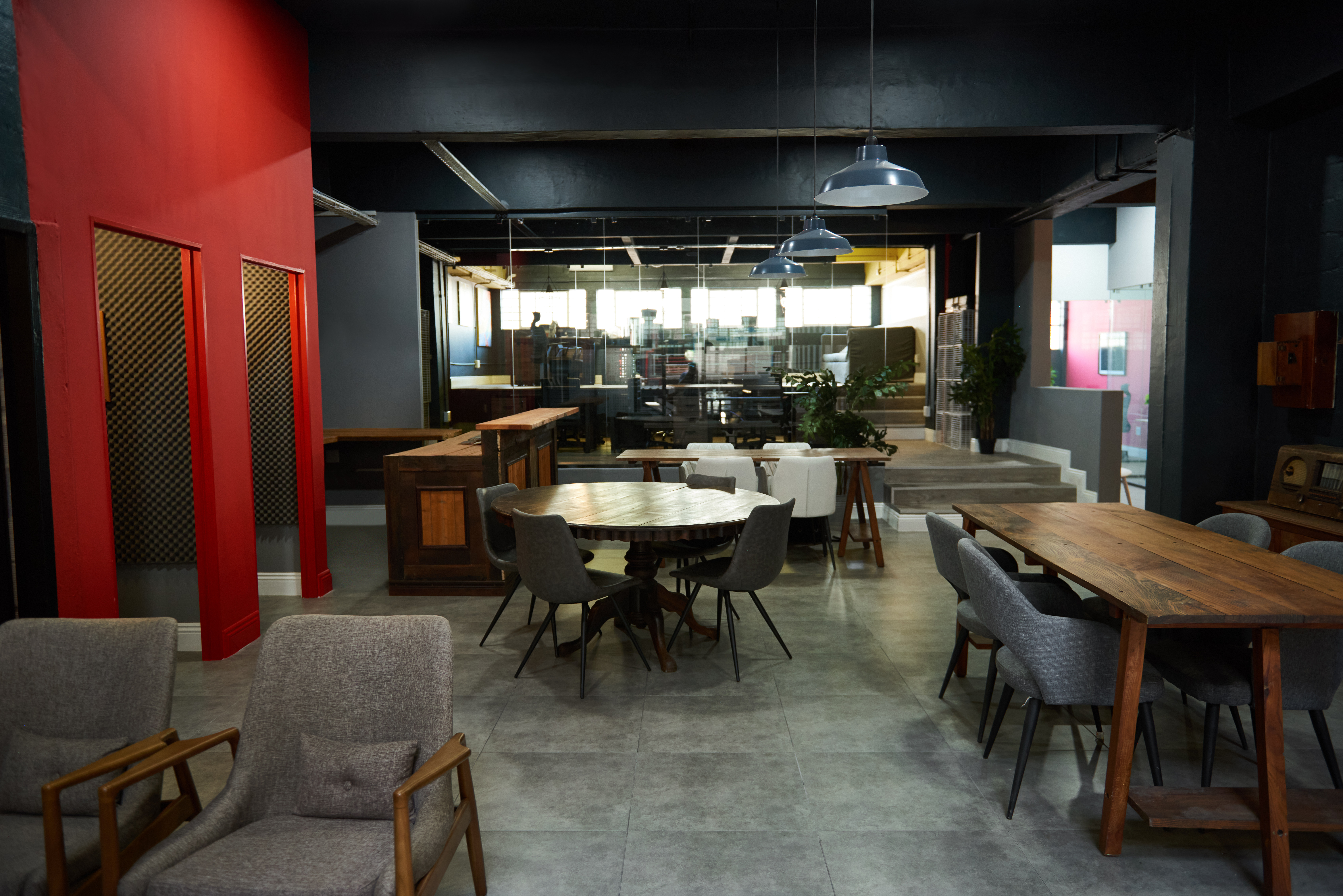
The most common types of breakroom furniture are:
-
Seating: This includes chairs, benches, booths, and even couches.
-
Tables: Regular dining tables, cafe tables, coffee tables, and even side tables would fit into this category.
-
Lounge seating: chairs, sofas, and loveseats.
-
Multi-functional furniture: Ottomans can serve as extra seating or even a footrest, while mobile furniture allows for flexible layout changes.
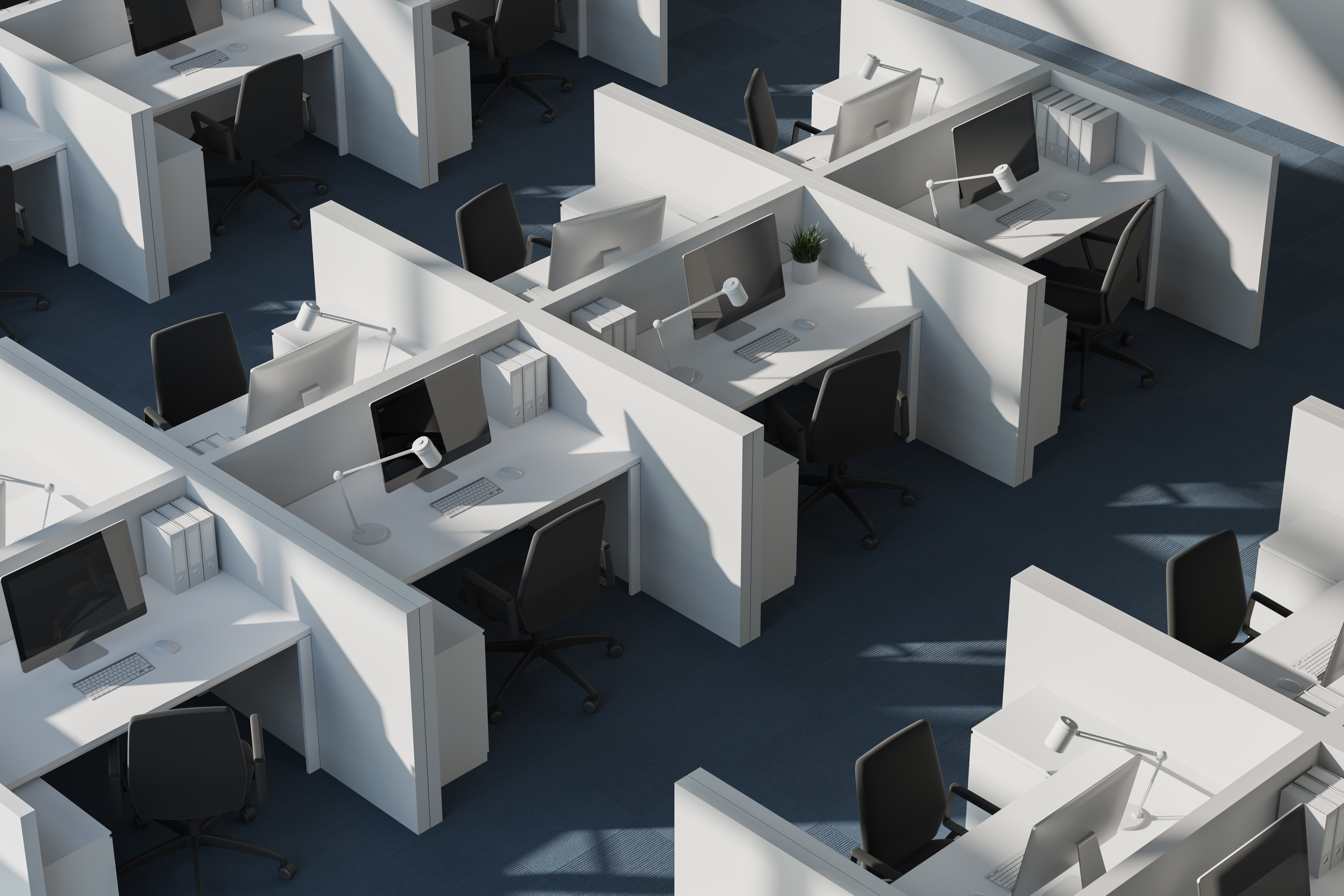
Cubicles
Cubicles often get a bad rap in favor of more modern workspace options, but they remain a popular choice for certain types of businesses. They can best be described as modular workstations that divide an open office space into individual workstations. They consist of partitions that create semi-enclosed spaces with a desk and chair inside.
Here are some of the benefits of cubicles that keep them a popular option:
-
Cubicle walls, even if not full height, provide a physical barrier between workspaces. This reduces noise distractions.
-
Cubicles often come with shelves, cabinets, or drawers. This dedicated storage space allows employee workstations to stay clutter-free.
-
Cubicle walls can be customized with pictures, plants, or other personal touches, which creates an inviting workspace that reflects employee individuality.
-
Compared to providing individual private offices, cubicles are a more economical way to utilize office space.
-
Cubicle walls can help absorb sound, reducing overall noise levels in the office compared to completely open floor plans.
-
Cubicle components can be reconfigured. This provides flexibility as business needs evolve.
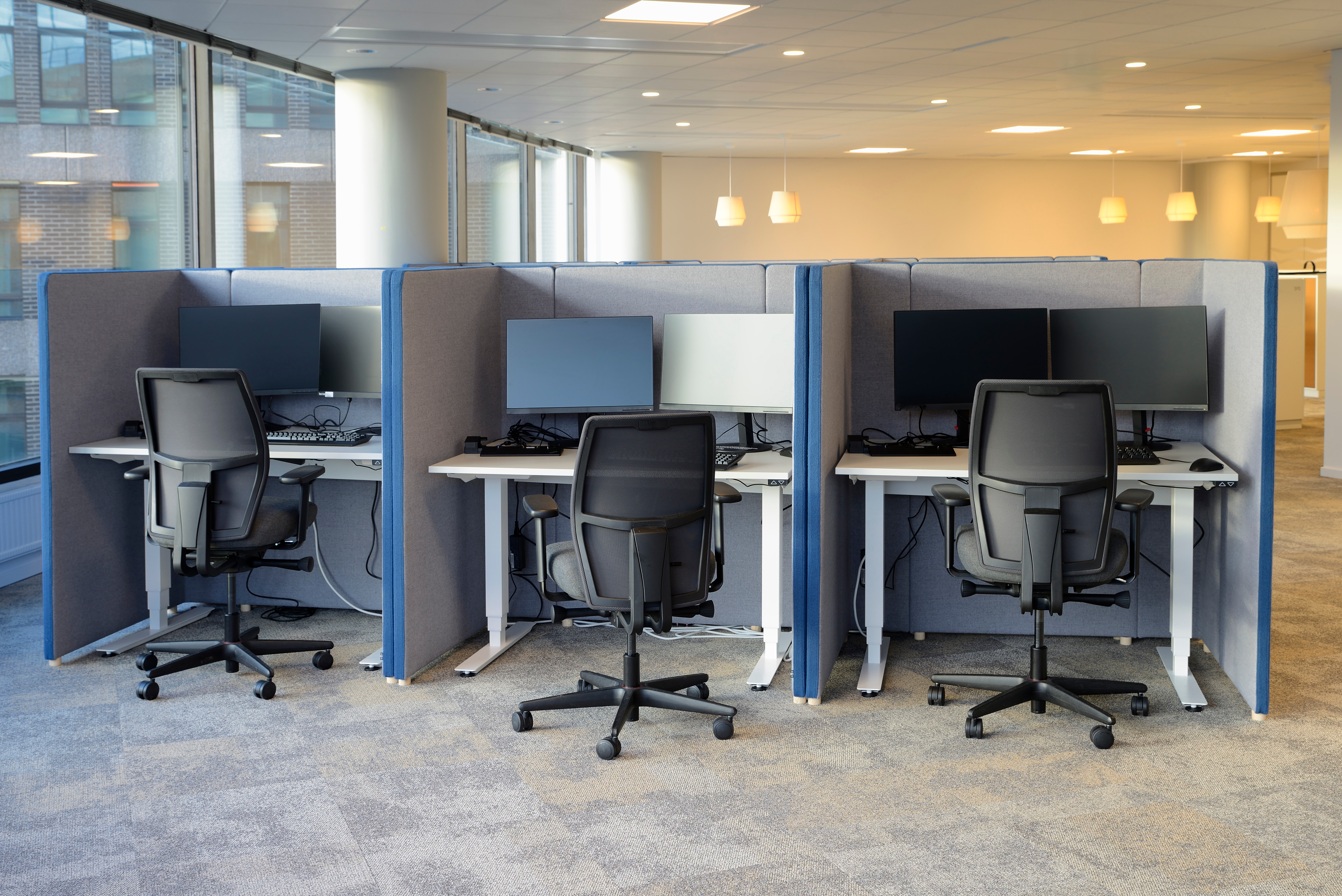
Types of Office Cubicles & Workstations:
-
Call Center Cubicles
-
Cubicle Desks
-
Cubicle Walls
-
Cubicle Workstations
-
2-Person Cubicle
-
4 Person Cubicle
-
6-Person Cubicle
-
8-Person Cubicle
Â
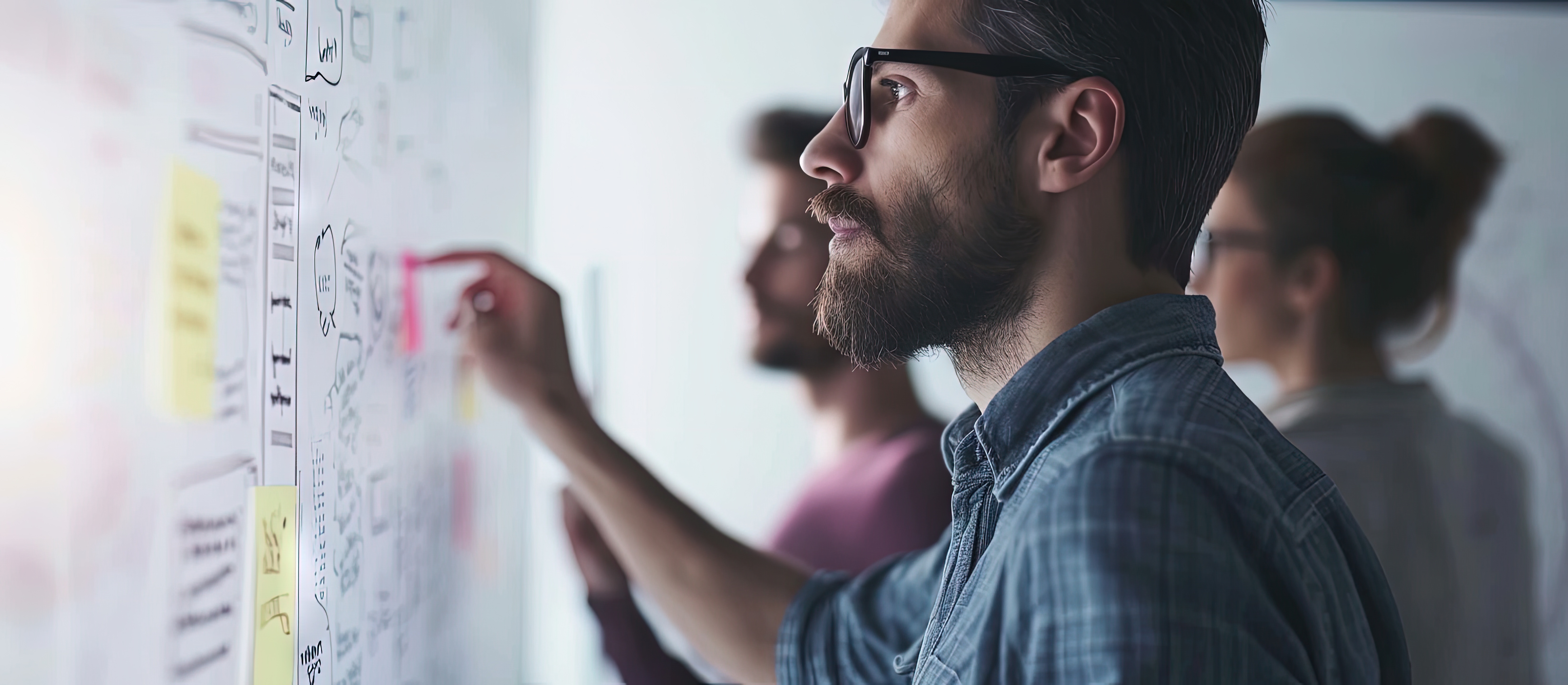
Whiteboards
Whiteboards, or dry-erase boards, are typically mounted on a wall and used for writing, drawing, or displaying information. They utilize special dry-erase markers and can be easily erased with a cloth or eraser.
Whiteboards are widely used for several reasons:
-
Visual collaboration and brainstorming.
-
Engaging and interactive communication.
-
Improved learning and memory.
-
Task organization and planning.
-
Flexibility and reusability.
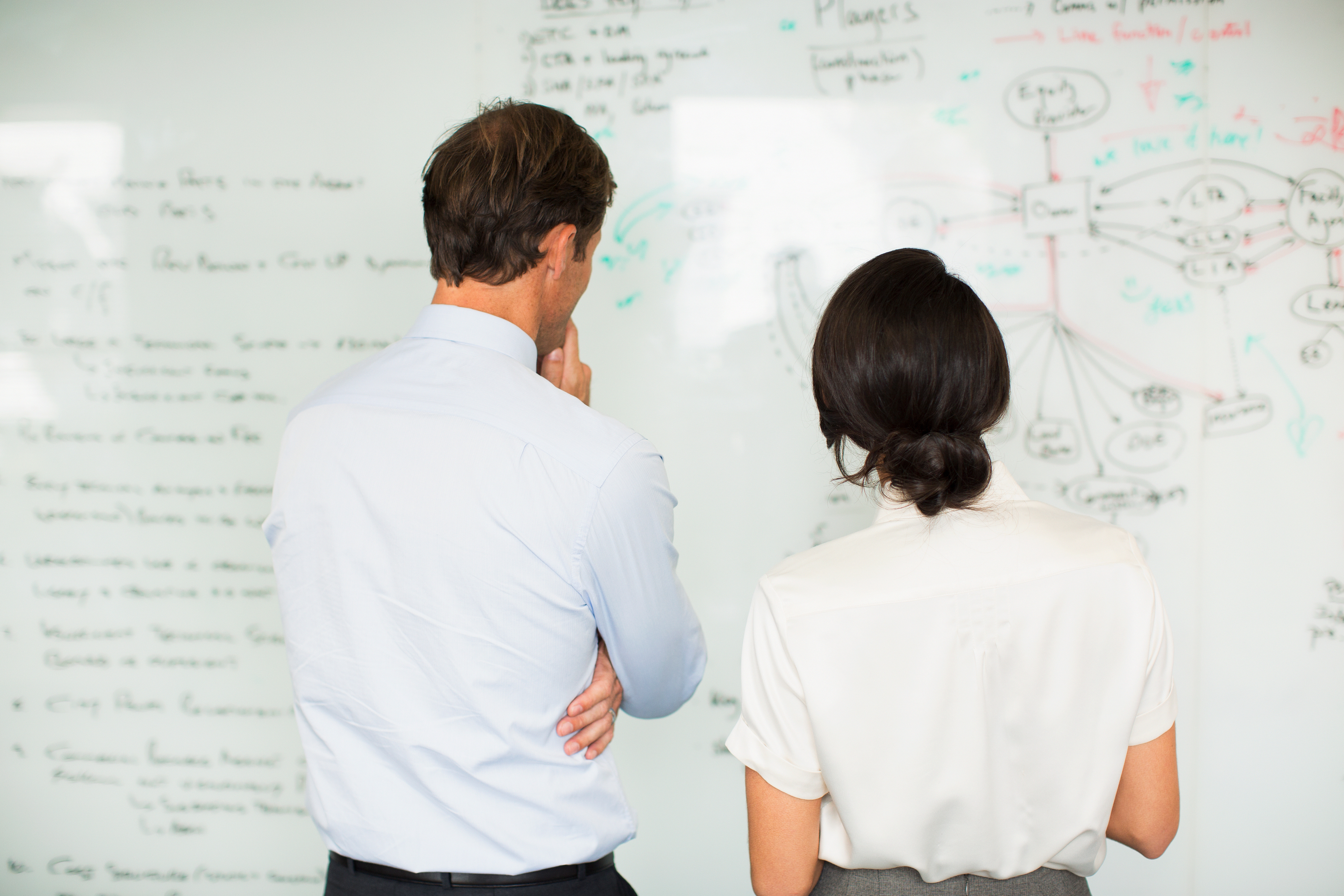
Types of Office Whiteboards:
-
Tri-fold
-
Magnetic
-
Glass
-
With Doors
-
Mobile
-
Double-sided
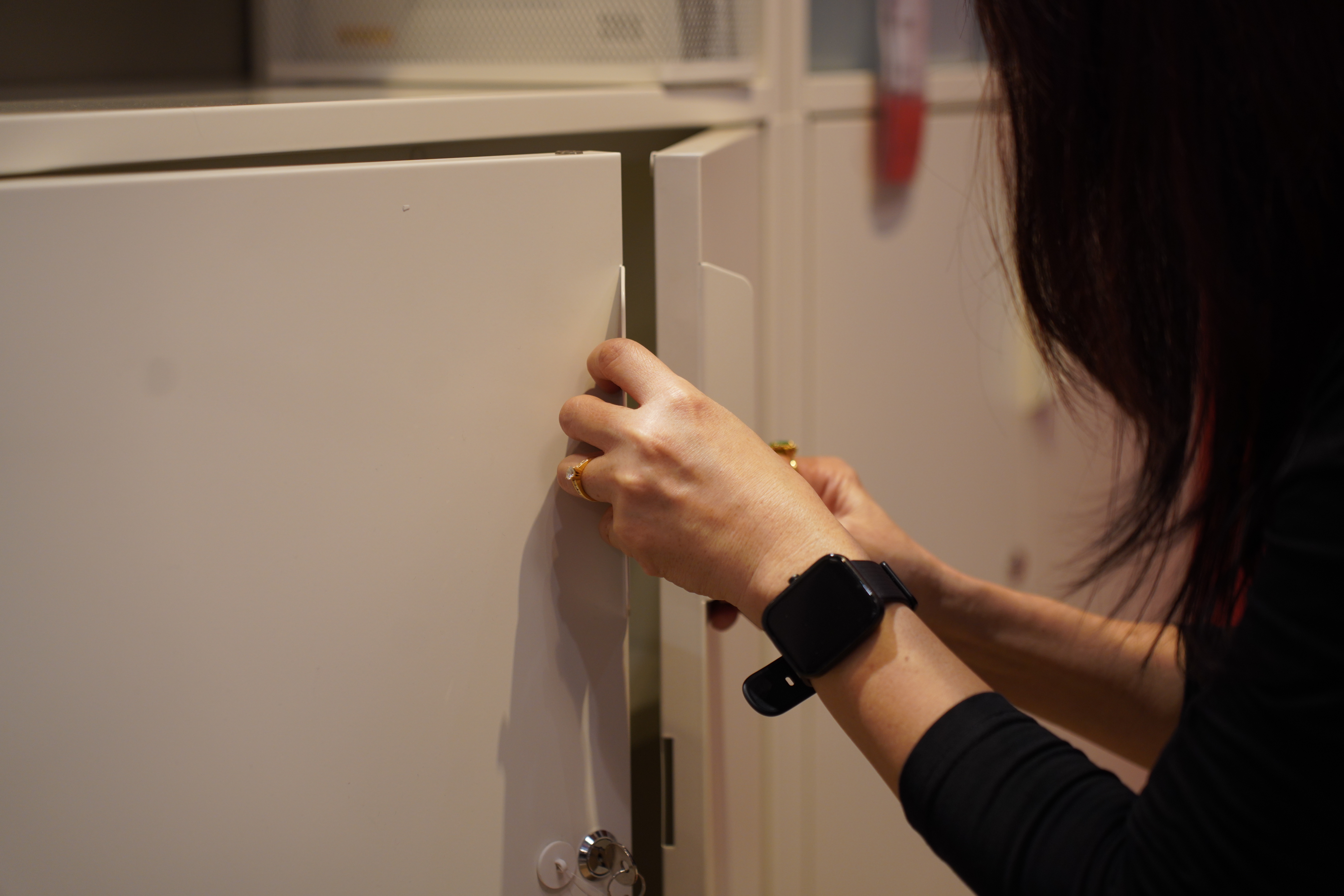
Storage Cabinets
Office storage cabinets help to maximize storage and organization in private offices by providing secure, out-of-site storage space for a variety of items. They come in various sizes, styles, and materials that can be suited to the needs of your business.
Use them if you need:
-
Designated space for office essentials.
-
To make smart use of vertical space.
-
To add an extra layer of security for sensitive documents, equipment, or confidential information.
-
A way to keep clutter at bay and create a more positive impression on clients, visitors, and colleagues.
-
Options specifically designed for documents, cabinets with shelves for binders and boxes, or even open cabinets for displaying awards or trophies.
-
Additional features, like fire resistance or waterproofing.
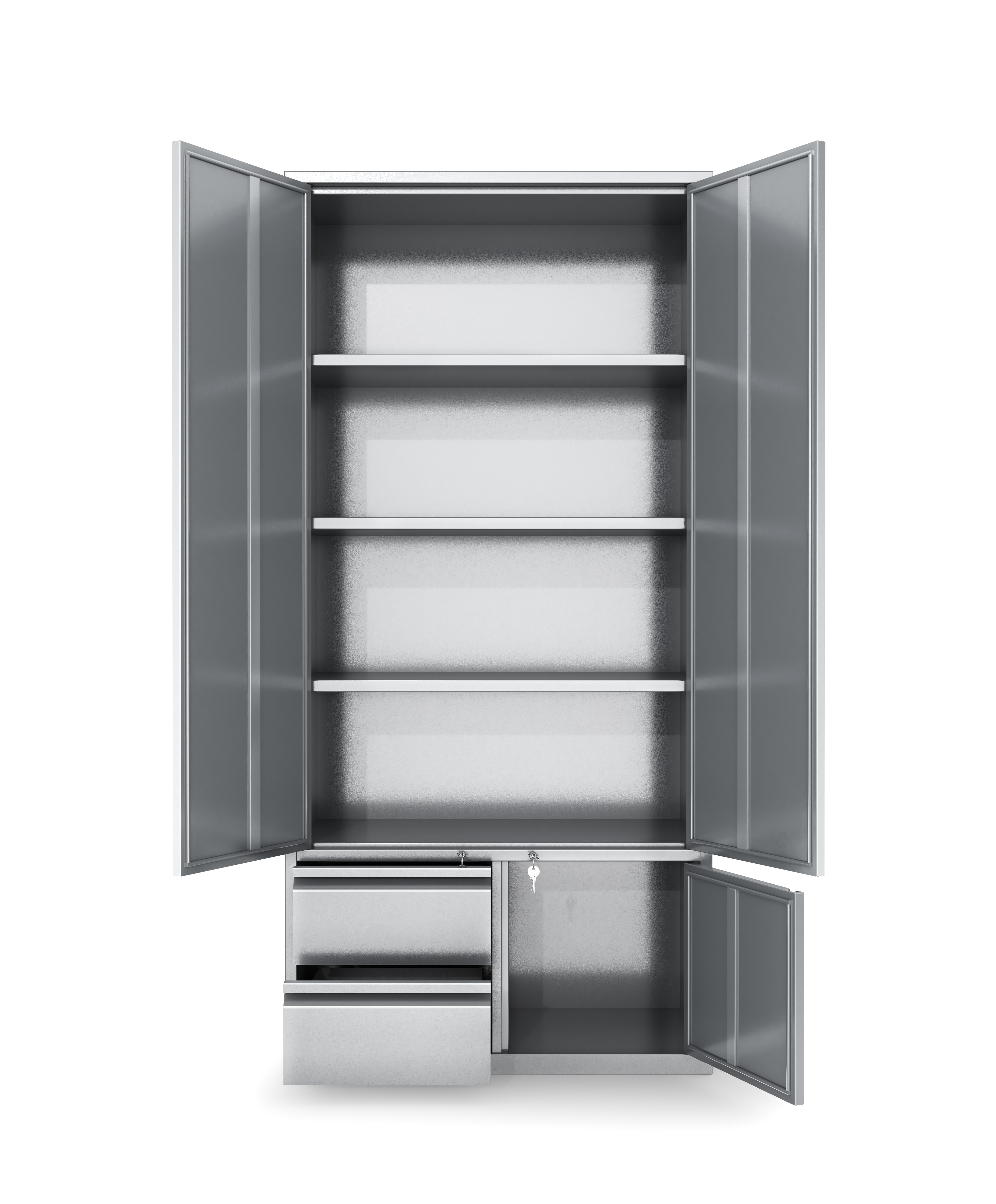
Types of Office Storage Cabinets:
-
Bookcases
-
Credenzas
-
File Cabinets
-
Fireproof Safe
-
Pedestal Drawers
-
Shelving

Conference tables
Conference tables serve as central gathering points for discussions, brainstorming sessions, and collaborative work in professional settings. Your conference table will need to seat certain numbers of people, functionally charge and power multiple devices, as well as fit your office's space and style.
Here's why conference tables are suited to their primary function as meeting room tables:
-
The central design of a conference table positions participants facing each other, encouraging interaction and creating an environment where everyone can contribute their ideas and opinions.
-
They can facilitate effective decision-making and well-rounded decisions.
-
Conference tables come in various shapes and sizes to accommodate different group sizes and meeting styles.
-
The surface area of a conference table allows for displaying presentations, reports, or other visual aids during meetings.
-
A well-chosen conference table can set the tone for professional meetings, leaving a positive impression on clients.
-
Many modern conference tables incorporate the seamless integration of laptops, projectors, and other presentation technology.
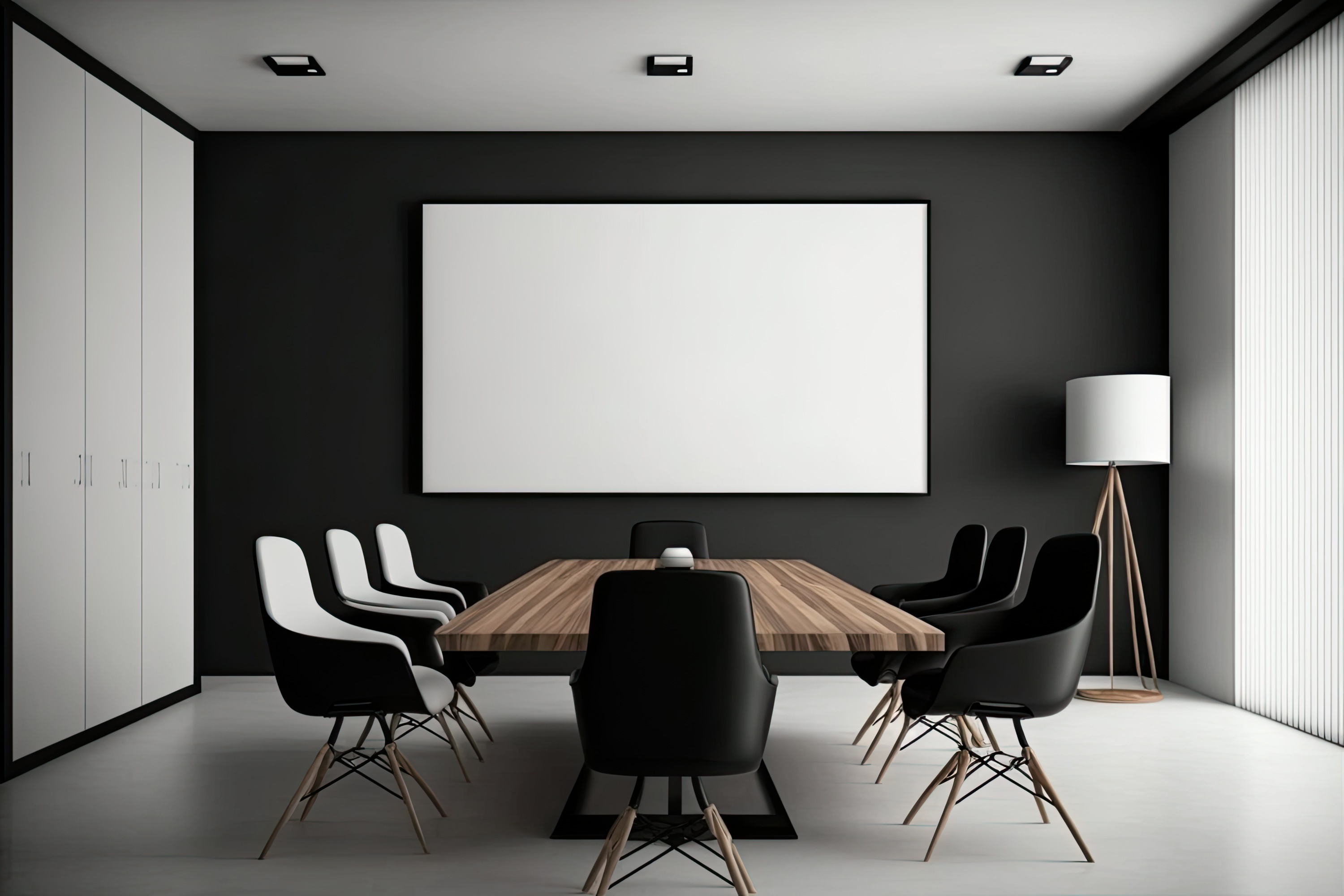
Types of Office Conference Tables:
-
Boardroom Tables
-
Boat-shaped tables
-
Conference Chairs
-
Power Hubs
-
Racetrack Tables
-
Rectangular Tables
-
Round Tables
-
Square Tables
-
Table & Chair Sets
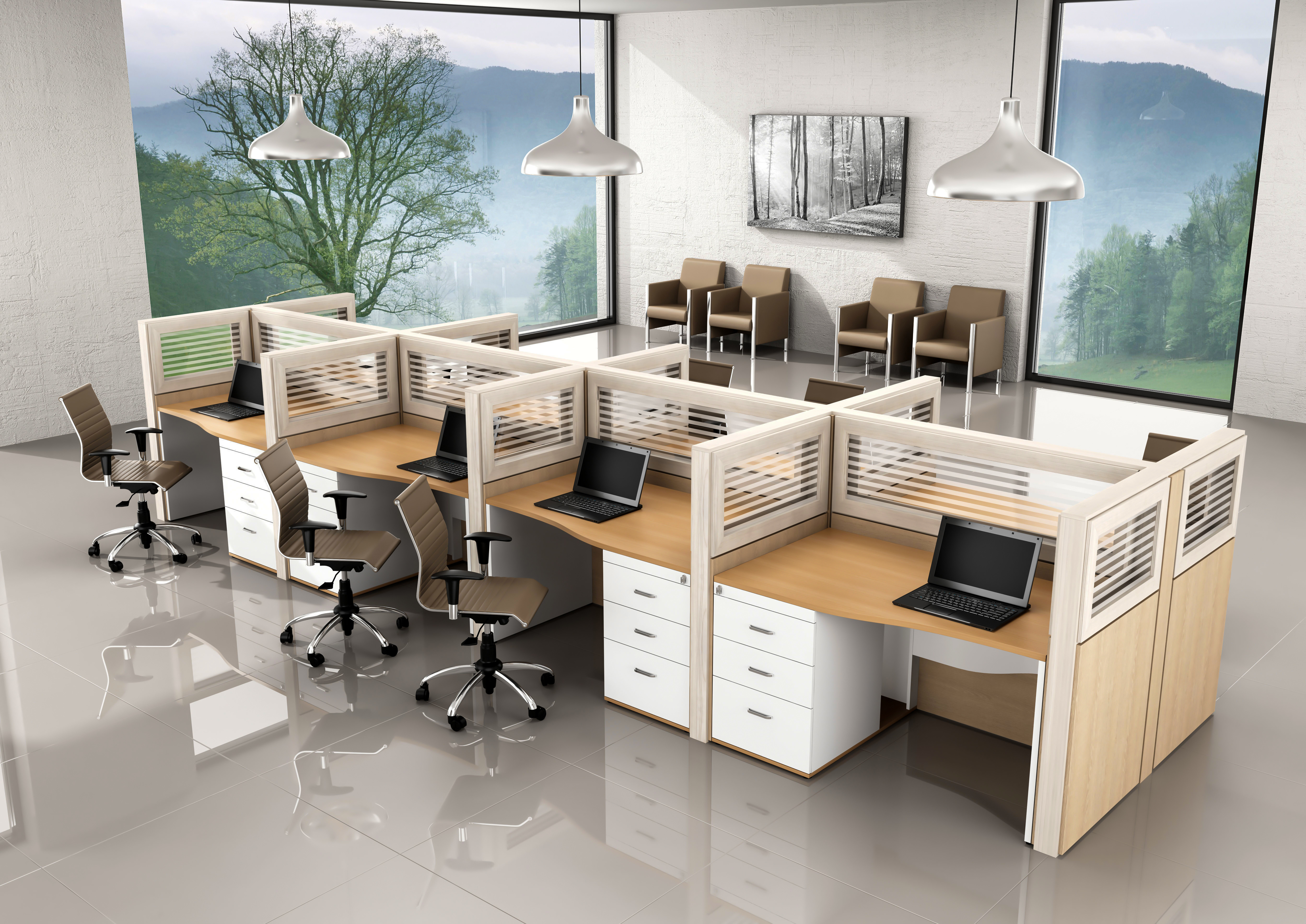
Workstations
Office workstations, similar to cubicles, are work areas designed for individuals within a large office space. They are made up of essential office furniture pieces and equipment that allow employees to complete their regular tasks.
Why workstations are beneficial:
-
A defined workstation separates an employee's work zone from the rest of the office, which can help them to focus.
-
Modern workstations often include the latest ergonomic features, like sit-to-stand desks and adjustable chairs. This allows you to maintain good posture and reduce discomfort and fatigue.
-
Well-organized workstations are equipped with everything needed to streamline workflow and maintain productivity.
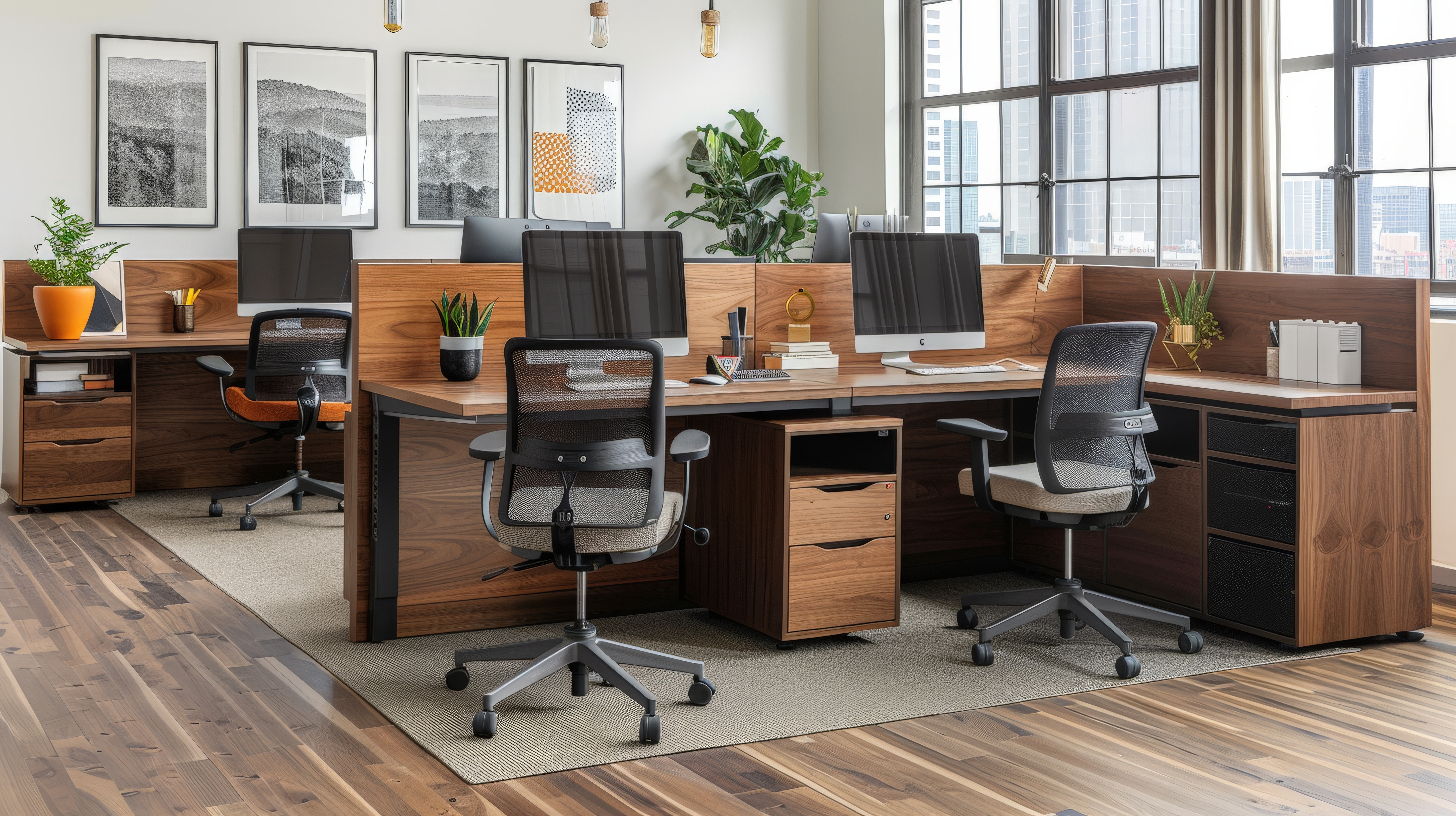
Types of Office Workstations:
-
2 Person Workstation
-
3 Person Workstation
-
4 Person Workstation
-
6-Person Workstation
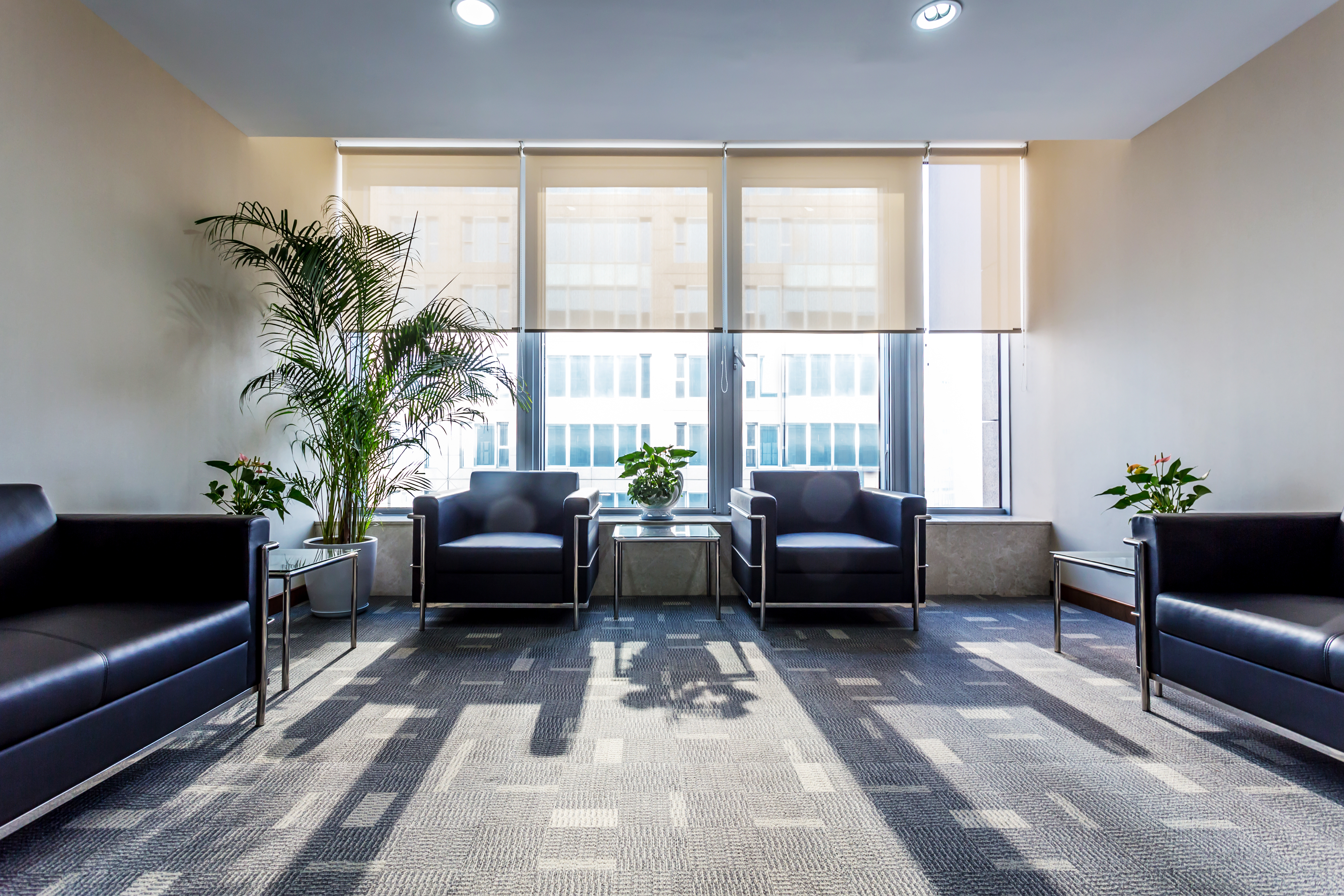
Waiting Room Furniture
Creating client areas will be important for a new office space. Waiting room furniture is chosen for the space where visitors or clients sit and wait to receive services. The focus is to provide comfortable seating and, potentially, some distractions while they wait.
Here's why this is important:
-
Comfortable and stylish furniture creates a positive first impression, setting the tone for the entire visit.
-
Waiting can be tiring. Comfortable chairs with good back support can help make the wait a little more painless.
-
While waiting, visitors may appreciate having access to distractions like magazines, a TV, or refreshments. Coffee tables, side tables, lamps, and more are necessary for this reason.
-
Waiting room furniture experiences a lot of wear and tear, so these pieces are specifically made to weather lots of use.

Types of Waiting Room Furniture:
-
Guest Chairs
-
Sofas
-
Coffee Tables
-
Side Tables
-
Desk Lamps

Desk Accessories
The right desk accessories are the items that will bring organization, comfort, and even safety to your workspace. They are the additional tidbits you place on your desk to improve its functionality. They come in a wide variety, catering to different needs and preferences.
As there are a variety of desk accessories, they present a multitude of benefits. Here are the most common types and why they can be useful:

-
Desk Organizers: These are compartments or trays to hold pens, pencils, paperclips, notepads, and other frequently used office supplies. They keep your desk clutter-free, and essential items within easy reach.
-
File Sorters and Trays: These help you categorize and organize loose papers, documents, or folders, thereby preventing clutter.
-
Wrist Rests and Keyboard Trays: These provide support for your wrists while typing, reducing strain, while a keyboard tray positions your keyboard at an optimal height for better posture.
-
Monitor Stands and Arms: Raising your monitor to eye level improves posture and reduces neck strain, especially if you spend long hours looking at the screen.
-
Desk Floor Mats: These provide support for your feet, improving circulation and reducing fatigue during times when you're standing at your desk.
-
Desk Lamps: Reduces eye strain and improve visibility in areas with dim overhead lighting.
-
Desk Pads: These offer a protective layer for your desk surface and can add a touch of style.
-
Power Outlets and Chargers: These can help you organize and charge multiple devices like laptops, phones, and tablets simultaneously, reducing cord clutter and keeping your devices powered up.

Conclusion
By choosing the right office furniture, you can transform your workspace into a more organized, efficient, comfortable, and personalized environment. This can lead to increased productivity, improved well-being, and a more enjoyable work experience.
Â